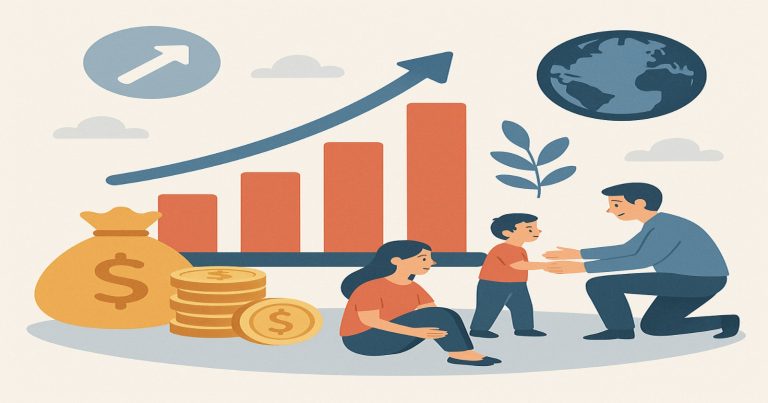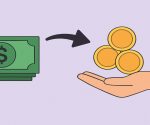Gross Domestic Product, or GDP, and welfare are aspects of analysis concerning economic and societal development in any country. Though GDP is commonly relied upon as an indicator of the growth rate, welfare looks at a more holistic perspective concerning the quality of life, well-being, and general satisfaction level of the citizens of a nation. This article discusses the subtleties of GDP and welfare, clarifying what each concept embodies, exploring their connection with one another, and deducing if GDP can measure welfare.
GDP Meaning
Gross Domestic Product (GDP) is one of the major measures in economics, used worldwide to measure the economic health and development of a nation. Essentially, it is a monetary value put together by everything produced in a country within a given period, normally compiled quarterly or every year. Economists use GDP as the indicator of business performance. Often, a developed economy and better people are associated with higher GDP.
How GDP is Calculated
- Nominal GDP: It is the measurement of the GDP in terms of the current market prices. In other words, it is not adjusted for inflation. This measure reflects the absolute size of the economy in short-period economic growth.
- Real GDP: Nominal GDP adjusts to inflation and allows better measurement of economic growth within periods. Real GDP is so important in the comparison of GDP measurements from different time periods since it neutralizes the influence of changes in price levels.
- GDP per Capita: This is nothing more than the GDP divided by the population size, thereby enabling one to measure average economic output per head. This can be taken as estimating the possible standards of living and income levels for a country.
Limitations of GDP as an Indicator
While useful in many respects, GDP does not measure factors like income distribution or environmental health, nor does it measure social well-being. Increased GDP may indicate that there is a greater level of economic activity, but the same could be the case with increased inequality or environmental degradation, both factors that reduce welfare.
Welfare Meaning
Welfare, unlike GDP, centers its focus on the quality of life and the welfare of individuals in society. It is more broadly put as welfare economics and encompasses the aspects of physical and mental health, educational opportunities and quality, environmental quality, and social security. Welfare economics is the field that optimizes the distribution of resources to further maximize social and individual welfare so that the outcomes are not only improved but also equitably distributed.
Components of Welfare
- Economic Welfare: This includes income levels, employment, and wealth distribution as well as economic security. It focuses on ensuring that people have a decent quality of life due to adequate incomes and financial security.
- Social Welfare: The provisions deal with healthcare, education, housing, and other forms of social services needed to ensure a fulfilling life. Social inclusion and equity therefore fall in line.
- Environmental Welfare: The levels of general welfare are significantly influenced by environmental health in the form of air quality, water, and natural resources. Based on these grounds, biodiversity and low levels of pollution have greater potential to offer sustainable welfare.
Relationship Between GDP and Welfare
While GDP and welfare are often considered complementary indicators of prosperity, they actually represent highly disparate dimensions of success. Indeed, GDP quantifies the economic output, while welfare captures more qualitative dimensions of welfare. Thus, this understanding can be useful to determine whether growth in the economy translates meaningfully into quality of life.
Key Aspects of Their Relationship
- Correlation in Developing Economies: Like in most developing countries, the increase in GDP positively correlates with better well-being because growth in the economy translates into better employment opportunities, infrastructure development, and access to essential services.
- Disconnect in Developed Economies: In the developed economy, the relationship between GDP and welfare may be relatively weak. In that case, in some high-income countries, GDP increases without any perceptible contribution to well-being due to complications like income inequality or environmental degradation.
- Limitations of GDP as a Welfare Measure: Since the issues with regard to distributional equity, environmental damage, and social aspects are basic to welfare, it is not at all possible to measure welfare using GDP. It further opens up the need for more comprehensive measures of welfare to determine actual societal welfare.
Difference Between GDP and Welfare
To understand the nuances of GDP and welfare, it’s helpful to compare them across different attributes. This table illustrates the key differences:
| Aspect | GDP | Welfare |
|---|---|---|
| Definition | The economic output of goods and services | Quality of life and overall well-being |
| Measurement Approach | Quantitative | Both quantitative and qualitative |
| Focus | Economic growth | Holistic well-being |
| Indicators Used | Income, production levels | Health, education, equality, environmental quality |
| Environmental Impact | Often ignored | Included |
| Distributional Equity | Not considered | Central aspect |
Is GDP a True Indicator of Welfare?
The debate on GDP as an indicator of welfare poses very important questions. Though GDP does provide an insight into the welfare of a country in terms of its economic activity and market productivity, welfare itself is not included. They do not measure the qualitative levels of health, social equality, and environmental sustainability, among others, which are some dimensions of welfare. A more precise definition of welfare analysis is made possible through composite indices that incorporate these dimensions by economists.
GDP and Welfare Limitations
- Inequality: GDP growth does not account for income distribution. A high GDP could still mean high inequality, with wealth concentrated in a few hands.
- Environmental Degradation: GDP increases can often come at an environmental cost. Economic activities contributing to GDP, like mining or manufacturing, might lead to pollution and resource depletion, which negatively impact welfare.
- Non-Market Activities: GDP excludes non-market activities, such as household work or community service, which significantly contribute to social welfare.
Alternative Indicators for Welfare
To bridge the gap left by GDP, several alternative indicators are widely used to measure welfare more comprehensively:
- Human Development Index (HDI): The HDI combines life expectancy, education levels, and per capita income, creating a multi-dimensional measure of development. It emphasizes the social aspects of well-being.
- Genuine Progress Indicator (GPI): GPI adjusts GDP by factoring in social costs, environmental degradation, and economic sustainability. It provides a clearer picture of sustainable economic progress.
- Social Progress Index (SPI): SPI assesses welfare based on access to basic needs, well-being opportunities, and environmental quality, focusing on social and environmental pillars.
GDP and Welfare FAQs
Can GDP growth alone improve welfare?
GDP growth can contribute to welfare by increasing resources and income levels, but it doesn’t guarantee well-being. Income inequality, environmental impacts, and social factors play critical roles in determining whether welfare actually improves alongside GDP growth.
What are alternative measures to GDP for assessing welfare?
Alternatives like the Human Development Index (HDI), Genuine Progress Indicator (GPI), and Social Progress Index (SPI) incorporate education, life expectancy, and environmental quality, offering a broader view of welfare than GDP alone.
Why doesn’t GDP account for aspects like happiness or environmental quality?
GDP strictly measures economic output, focusing on goods and services produced and sold in the market. It overlooks non-market factors like environmental sustainability and subjective aspects like happiness, which are central to welfare.
How does income inequality impact the relationship between GDP and welfare?
High-income inequality can prevent GDP growth from benefiting the broader population, leading to a situation where economic growth fails to translate into widespread welfare improvements.
Is there a better measure than GDP for sustainable development?
The Genuine Progress Indicator (GPI) and other metrics like the Environmental Performance Index (EPI) offer a more sustainable development perspective by considering environmental and social costs, making them valuable alternatives to GDP for long-term welfare evaluation.


